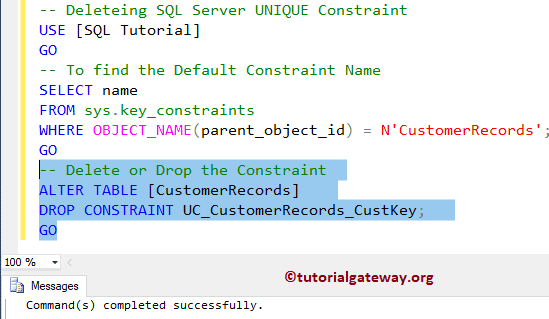

POSTGRESQL ALTER TABLE ADD CONSTRAINT UNIQUE PLUS
quer圜ontext #Īllows configuring a context to be passed to the wrapIdentifier hook for formatting table builder identifiers. I read this in the doc: ADD tableconstraint NOT VALID This form adds a new constraint to a table using the same syntax as CREATE TABLE, plus the option NOT VALID, which is currently only allowed for foreign key constraints. Defaults to tablename_pkey unless constraintName is specified. select from informationschema.tableconstraints where constraintname 'addressuniq'. dropPrimary #ĭrops the primary key constraint on a table. Your constrainttype should also be 'PRIMARY KEY' so the best way to locate the constraint is using constraintname. A default unique key name using the columns is used unless indexName is specified (in which case columns is ignored). dropUnique #ĭrops a unique key constraint from a table. A default foreign key name using the columns is used unless foreignKeyName is specified (in which case columns is ignored). Table.dropForeign(columns, )ĭrops a foreign key constraint from a table. Table.increments(name, options= ) dropForeign # Renames a column from one name to another. dropSchemaIfExists ( 'public', true ) Schema Building # dropColumn #ĭrops a column, specified by the column's name dropColumns #ĭrops multiple columns, taking a variable number of column names.

Never use equal operator to compare a value with NULL because it always returns NULL. Add and Remove Unique Constraints in PostgreSQL. The IS NOT NULL negates the result of the IS NULL.

To check if a value is NULL or not, you use the IS NULL operator. Next, I’m gonna copy the query that adds a new foreign key constraint to the owner field of accounts table. Use the NOT NULL constraint for a column to enforce a column not accept NULL. dropSchemaIfExists ( 'public' ) //drop schema if exists 'public' cascade So let’s copy the SQL query that dbdiagram has generated for us and paste it to this migration file 000002addusers.up.sql. You cant provide a list of column in parentheses, you need to use multiple ALTER COLUMN options separated by a comma: ALTER TABLE thetable ALTER COLUMN testid set not null, ALTER COLUMN type SET NOT NULL Share. Indexes don't show up in the information schema.Knex. Name column in author table is primary key and its referenced as foreign key in bookstore table. So a more likely possibility is that you have a unique index on those columns. So for this to be the solution in your case it means whoever created the primary key gave it an explicit name of address_uniq, which would be confusing. Note that we don't have to give a primary key constraint a name, as Postgres will generate a default of _pkey. Try searching the information schema where constraint_type = 'PRIMARY KEY'. While a CHECK constraint that violates this rule may appear to work in simple tests, it cannot guarantee that the database will not reach a state in which the constraint condition is false (due to subsequent changes of the other row(s) involved). # insert into addresses values (1, 2, 4, 4) ĮRROR: duplicate key value violates unique constraint "addresses_pk" PostgreSQL does not support CHECK constraints that reference table data other than the new or updated row being checked. # alter table addresses add constraint addresses_pk primary key (id) Since PSQL allows multiple options (any combination of ADD, DROP, ADD CONSTRAINT, and so on), IN DICTIONARY is honored under all circumstances to guarantee. : ALTER TABLE public.ELEMENTS DROP CONSTRAINT IF EXISTS elementscheck ALTER TABLE public.ELEMENTS ADD CONSTRAINT elementscheck CHECK ( (t1id IS NOT NULL) OR (t2id IS NOT NULL)) Share. We can get the same error message if we violate a primary key constraint. ADD CONSTRAINT IF NOT EXISTS doesnt exist.


 0 kommentar(er)
0 kommentar(er)
